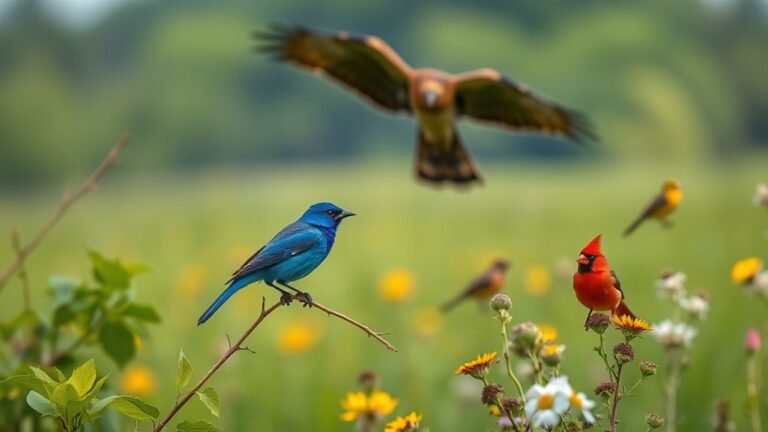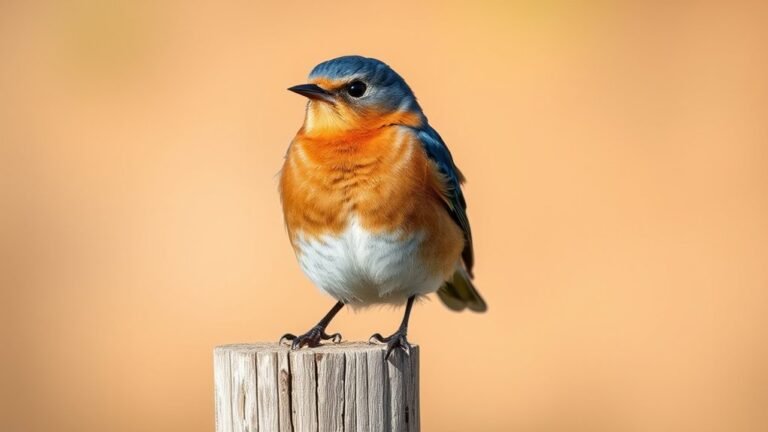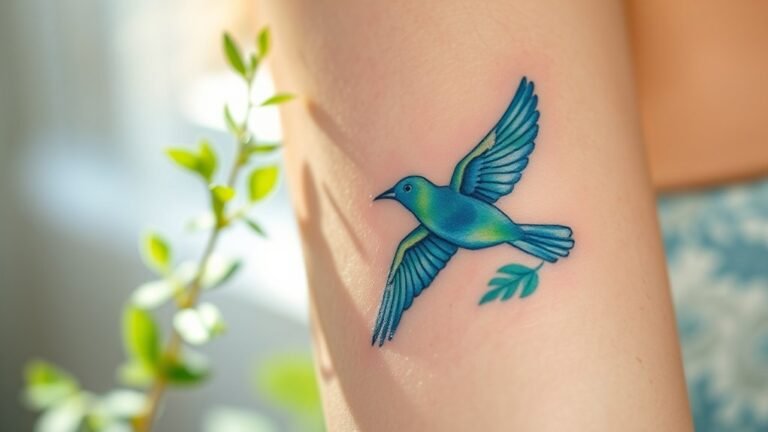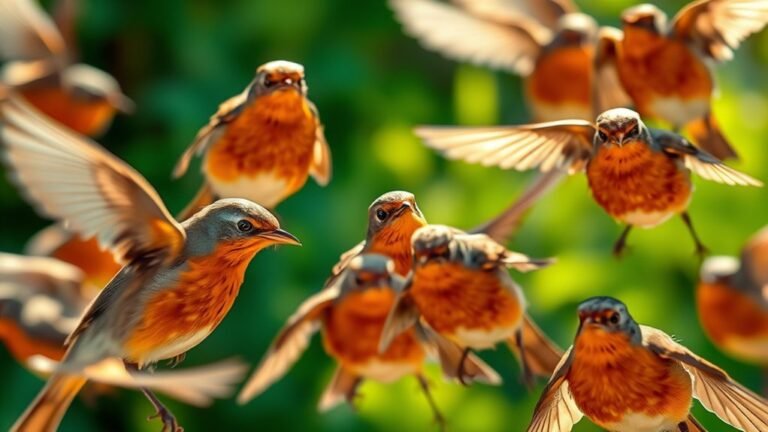Eagle Vs Hawk Vs Falcon: a Comparative Analysis
Eagles, hawks, and falcons are fascinating birds, and each one is special in its own way. They hunt differently and have unique looks. Let's break it down.
Eagles are big and powerful. They use their size to catch prey. You might see them soaring high in the sky, looking for food. Hawks are a bit smaller and more sneaky. They are good at hiding and surprising their prey. Falcons are the fastest. They zoom through the air, chasing down their meals.
These differences help each bird survive in its own way. Eagles find food by using their strength. Hawks can catch small animals by being quiet. Falcons rely on speed to snatch their meals before others can react.
Knowing these traits helps us understand how important these birds are to nature. They keep the balance in their habitats. Each bird plays a role in its environment. Their hunting methods not only help them live but also help other animals thrive.
So, the next time you see an eagle, hawk, or falcon, remember how unique they are and how they help the world around us.
A Quick Overview
Eagles are the biggest birds among the three. They have strong wings and claws. Eagles like to hunt high up in the sky for large animals.
Hawks are smaller than eagles. They are quick and good at sneaking up on their food. Hawks can live in many places, which helps them find food easily.
Falcons are the smallest of all. They are really fast and have bodies built for speed. Falcons catch their food while flying in the air.
Eagles and hawks usually hunt on their own. However, falcons sometimes work with a partner or in small groups to catch food.
All three birds help keep nature balanced. But they are at risk because of losing their homes and changes in the environment.
Now you know a little more about these amazing birds!
Physical Characteristics of Eagles, Hawks, and Falcons
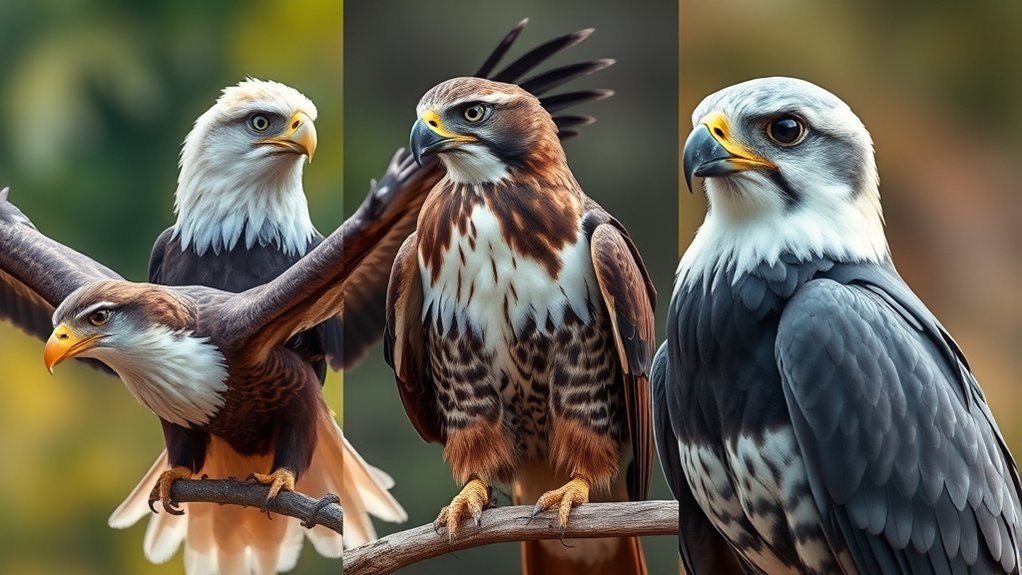
Eagles, hawks, and falcons are all birds of prey, but they look different and have unique features. Let's take a closer look at each of them!
Eagles are the biggest of the three. They've wide wings and strong claws. These features help them fly high in the sky while looking for food. Eagles are powerful and often hunt large animals.
Hawks are medium-sized birds. Their feathers come in a mix of browns and whites, which helps them hide in the trees and grass. This camouflage makes it easier for them to surprise their prey.
Falcons are the smallest among these birds. They've long, pointed wings and slim bodies that allow them to fly really fast, especially when diving to catch their food. Their feathers often have bold patterns, which can help them blend in and communicate with each other.
Learning about the different sizes and feather patterns of these birds helps us understand how each one has adapted to live in its home. This makes us appreciate these amazing birds even more!
Hunting Techniques and Strategies
Eagles, hawks, and falcons have unique traits that help them hunt.
Eagles are powerful birds with big wings. They like to fly high and quietly watch for their prey. When they spot something, they dive down quickly to catch it.
Hawks are smaller and more agile. They can turn sharply in the air and are great at chasing smaller animals. They use both stealth and speed to catch their food.
Falcons are famous for their speed. They dive, called stoops, very fast to grab their prey.
Each bird uses its own special skills. Eagles use strength and height, hawks mix stealth and quick movements, and falcons dazzle us with their fast dives. Watching them hunt shows us how skilled they are.
Habitat Preferences and Distribution
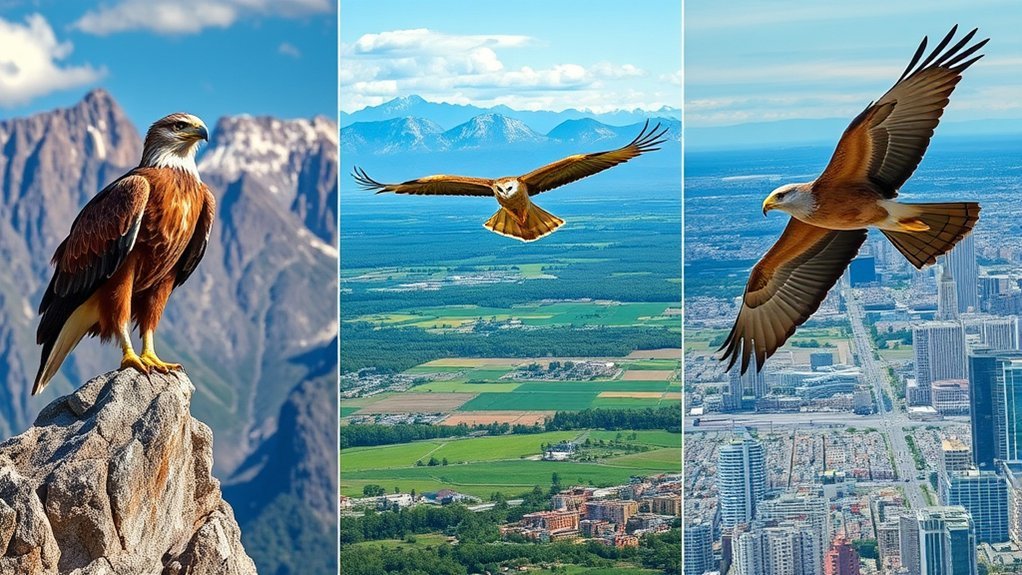
Eagles, hawks, and falcons are all birds of prey, but they live in different places and do different things.
Eagles like wide-open spaces. They often make their nests near water because that gives them a lot of food options. You can spot them soaring over lakes or rivers.
Hawks are more flexible. They live in many places, like forests, fields, and even cities. They adjust well to whatever food is around them.
Falcons prefer wide, open areas like grasslands or cliffs. They like to nest and hunt from higher places.
These birds also move around differently. Eagles travel far distances to find the best places to breed. Many hawks and falcons have set paths they follow based on where they can find food and shelter.
Learning about these birds helps us understand their homes and the environments they thrive in.
Behavioral Traits and Social Structures
Eagles, hawks, and falcons each have interesting behaviors and social structures that help them survive in nature.
Let's take a closer look at how these birds interact and adapt to their environment.
- Social Order: Eagles have a strong social order. Usually, a pair of eagles will defend their territory from others. They work together to keep their home safe.
- Courtship Displays: Hawks perform exciting aerial dances to win over mates. These shows display their flying skills, which help them impress potential partners.
- Team Hunting: Falcons often hunt in pairs or small groups. They work together to catch fast-moving prey, which makes it easier for them to succeed.
These behaviors not only help them survive but also build a sense of community among their kind.
Watching how they interact can help you see the importance of their social skills and courtship in their lives.
Ecological Roles and Conservation Status
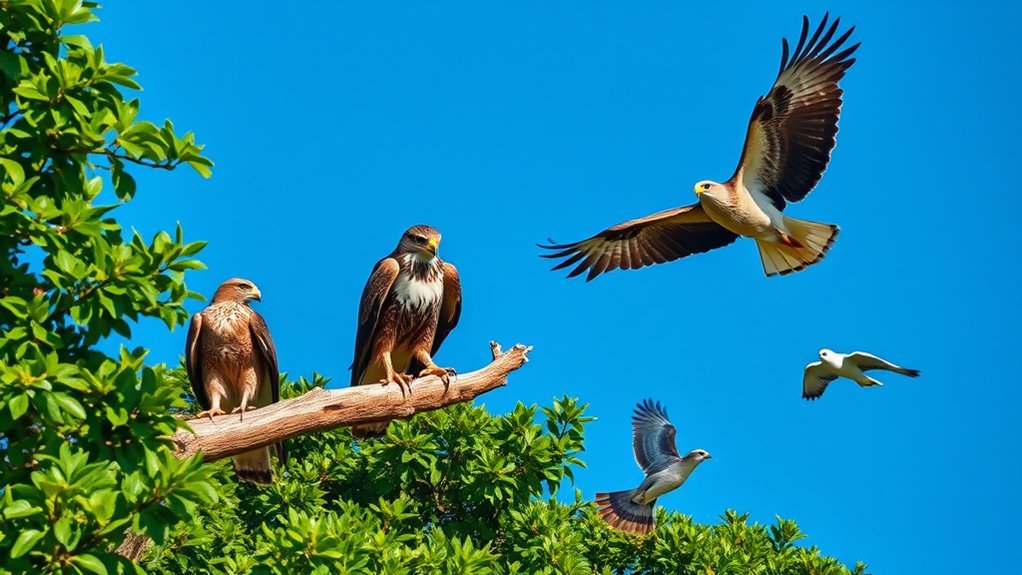
Eagles, hawks, and falcons each have important roles in nature. They help keep the balance of ecosystems. By eating different animals, these birds help control the number of prey. This stops some animals from overpopulating, which could harm their habitats.
For example, hawks eat a lot of rodents, while eagles prefer bigger animals. Each bird has its own way of hunting, and together, they create a healthy food chain.
Sadly, these amazing birds face many dangers. Habitat loss, pollution, and climate change are hurting their populations. As fewer raptors exist, it can lead to too many prey animals. This can upset the balance in nature.
Cultural Significance and Symbolism
Eagles, hawks, and falcons are birds that have been important in many cultures around the world.
These birds aren't just amazing to watch; they also connect to feelings and ideas that matter to people. Here are some ways these birds are seen in different cultures:
- Eagles: These big birds stand for freedom and strength. Many myths talk about eagles as protectors that bring good luck.
- Hawks: Hawks are smart and can see far. They mean having a clear goal and being focused. People may see hawks as helpers in their life journeys.
- Falcons: Falcons are fast and quick. They show ambition and success. People view falcons as reminders to chase their dreams and goals.
These birds live in nature and inspire a sense of connection to our world. They remind us of the qualities we value in ourselves and others.
Frequently Asked Questions
How Do Eagles, Hawks, and Falcons Compare in Terms of Lifespan?
Eagles live longer than hawks and falcons. On average, eagles can live up to 30 years. Hawks and falcons usually live between 10 and 20 years.
What Are the Differences in Mating Rituals Among These Birds?
Different birds have special ways to find a mate. Eagles like to show off by soaring high and doing amazing aerial tricks. Hawks, on the other hand, make loud calls to attract partners. Falcons take their time to build detailed nests for their future families. Each type of bird has its own unique way of mating, making the animal kingdom an interesting place to explore!
How Do Climate Changes Affect These Birds Differently?
Climate change affects birds in different ways. For example, eagles can adapt better than hawks. They find ways to live in changing environments. On the other hand, falcons face challenges with warmer weather. This makes it harder for them to breed and hunt for food. Changes in temperature and loss of habitats can harm all these birds, but they react differently. Each bird has its own struggle with climate change.
Which Species Are Known for Migration Among Eagles, Hawks, and Falcons?
Some birds, like the broad-winged hawk and the peregrine falcon, migrate. They travel along certain routes during different seasons. Eagles, on the other hand, might not migrate as much. Their movement can depend on the weather and the place where they live.
What Roles Do Juvenile Birds Play Within Their Families?
Juvenile birds start as chicks that need help from their parents. As they grow, they become part of the family and take on important jobs. They learn to find food, which helps them survive. They also practice social skills by interacting with family members, which helps everyone get along better.
These young birds play a big part in keeping the family close. By helping out and learning new things, they build strong bonds with their parents and siblings. This teamwork makes the whole family stronger and happier.

Luna is the passionate founder and author of Birds and You, a website dedicated to sharing her love for birds with fellow enthusiasts. Through her engaging articles and guides, she aims to educate and inspire others to explore the fascinating world of birds. When she’s not writing, you can find Luna observing birds in their natural habitats or sharing beautiful bird photography on Pinterest. Join her on this journey to celebrate and protect our feathered friends!




